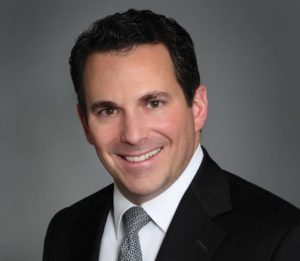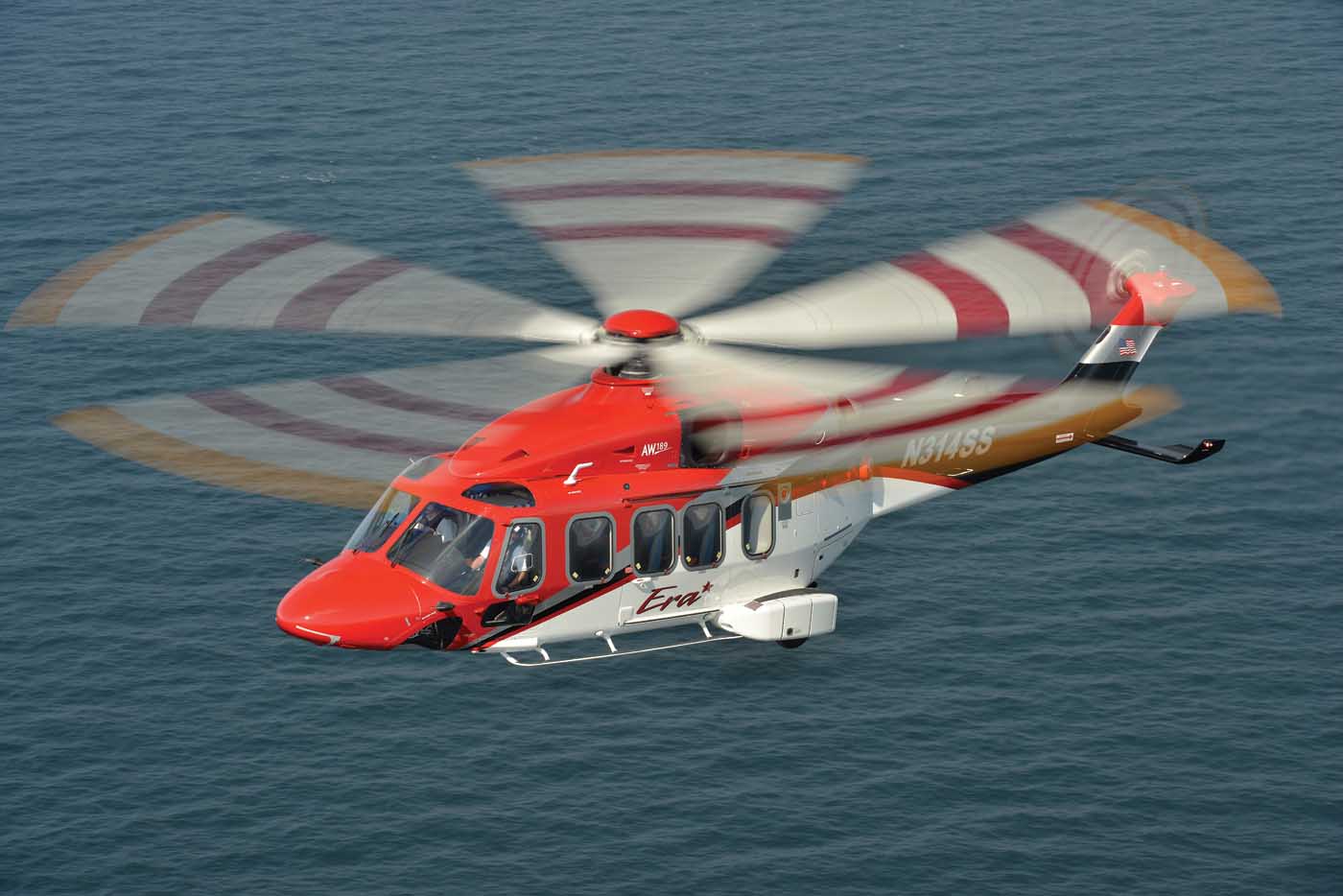Editor’s Note: The following is a Q&A with president and CEO of Era Group, Chris Bradshaw. Bradshaw has served as Era’s president and CEO since November 2014. Prior to joining the operator in 2012, he worked as an investment banker and co-founded an independent financial advisory firm. This interview originally appeared in the Dec. ’19/Jan. ’20 issue of Vertical.

Vertical: It’s obviously been a very challenging few years for the offshore helicopter transport sector. What has Era done differently that has helped it endure when other offshore operators have had to file for Chapter 11 bankruptcy protection?
Chris Bradshaw: I think we were very proactive in addressing our cost structure at the early stages of the downturn. In late 2014, we completed an internal reorganization of the company, which significantly reduced our costs. Unfortunately, a lot of those cost reductions were headcount, and it’s always difficult to take out jobs and positions. But we did have a view about what market conditions were likely to be like, and we thought we needed to go ahead and adjust our cost structure for the new reality in the market.
Over the course of the downturn we reduced our overall headcounts by approximately 45 percent, including a 55 percent reduction in fixed, or G&A headcount positions. And then we pursued a strategy of, first of all, maintaining the highest safety standards. Second, maximizing the utilization of our helicopter fleet. Third, realizing cost synergies wherever possible. And fourth, protecting our balance sheet. As we continued to generate free cashflow, which we are able to do because of the cost reductions, we used that cash, as well as cash that was generated from the sale of underutilized helicopters, to pay down debt. Those actions have allowed us to maintain a strong business and a strong balance sheet now almost five years into the downturn.
V: So how large is the company’s staff and fleet now? Are you operating any Super Pumas?
C.B.: We have 105 helicopters and approximately 650 employees globally. We have just one H225, which is currently in long-term preservation in Norway.
V: How do you view the offshore industry today?
C.B.: Well, on the positive side, we do think that the offshore oil-and-gas market recovery has begun. We think it is going to be a gradual one, not a dramatic hockey-stick-like recovery. But we are seeing gradual improvements in the market, which is encouraging.
V: Is that just in the amount of exploration work?
C.B.: That’s right. There are more dollars being spent offshore, more rigs that are going back to work driving an increase, albeit a gradual one, in the need for helicopters to support those offshore operations. I think that’s the positive that we’re seeing in the market fundamentals. On the negative side, the market is unfortunately much smaller than it was prior to the downturn. Now we’re in a position where there’s an excess amount of equipment, particularly of the heavy helicopters, there’s an excess amount of operators, and there’s an excess amount of leasing companies. The overcapacity is resulting in a continued very challenging industry environment, where really no one is earning a premium to their cost of capital, which of course is an unsustainable situation over the long run.
V: And that’s what’s driven some of these Chapter 11 cases?
C.B.: Yes, I think that’s a big part of it. It’s also one of the fundamental reasons we believe that consolidation is needed to address the challenges that exist in the industry. It’s necessary to address some of the overcapacity that exists in the industry and to achieve better absorption of the significant fixed costs that are required to run an air carrier.
V: You made a call for industry consolidation quite publicly earlier this year. What sort of feedback did you have following that?
C.B.: Almost all of the conversations that I’ve had with various industry participants, whether it’s competitor operators, leasing companies, OEM conversations — I think people generally agree that there needs to be some consolidation in the industry to get us to a place that’s more sustainable. I think it’s really important for our customers as well, because at some point we and all of our fellow operators are going to need to replenish our helicopter fleets. It’s just a matter of time before capital will be required and the customers are going to want access to the latest generation, most sophisticated equipment with the best safety features.
I think if you have an industry that has perpetually failed to earn a premium over its cost of capital, then the capital providers are not going to be willing to commit the capital dollars that are required to take actions like replenishing your helicopter fleet. I think it’s in everyone’s interests, including our customers, that we get to a situation where the industry is more sustainable.
V: Would it be fair to say that the Era’s had conversations with CHC or Bristow about how this consolidation might play out?
C.B.: I don’t want to mention any specific opportunity, or conversation, but I would note that this is something we’ve been actively pursuing. I think there are a number of people in the industry who recognize a similar dynamic and are actively pursuing opportunities to effect some of the consolidation that the industry needs.
V: Do you foresee the fleet replenishment you’ve talked about being in the form of super mediums? Is there still a market for the big heavies?
C.B.: We do think there will continue to be a market for aircraft such as the Sikorsky S-92, because if you’re a certain distance offshore, that is still going to be the best, most efficient lift solution for those long-distance missions. We are optimistic about the future of models like the Leonardo AW189. We think the AW189 presents a very compelling value proposition for our customers and that it can do a lot of the missions that a traditional heavy did at a lower cost. The aircraft is about half the capital cost and about a third lower operating costs compared to a traditional heavy aircraft.
I would note that on the replenishment, at least for our fleet, this is not something that we need to do tomorrow, next year, or the year after that. I think we’re in a good position now with our fleet to service the market opportunities that are there. But eventually, we’re all going to need to bring in new helicopters to replenish our fleets. And that’s really only going to be possible if we can access capital, and accessing capital will only be possible if there’s a track record that that capital will be rewarded.
V: Diversification seems to be a key part of Era’s recent strategy. What have you been doing to bolster other parts of the business?
C.B.: We have signed a contract for a leading player in the commercial space industry to respond in the event that an unexpected incident occurs. This is a mission in our emergency response service line that’s one of those situations where you hope your services are never needed, but the customer is paying us to be on standby.
We view this as an attractive growth and diversification opportunity since it is not tied to the oil-and-gas commodity cycle.
We’ve also signed another emergency response service contract in Surname, to support the offshore oil-and-gas market activity in the country. So it’s continued diversification for us geographically, which we like. The Suriname Guyana basin has been one of the relative bright spots in the offshore oil-and-gas industry over the last five years.
V: What’s the relationship been like with the OEMs through the downturn? Have they been doing enough to support the operators?
C.B.: I think it continues to be good. From our perspective, these are obviously extremely important relationships for us. They are long-term in nature and I think it’s important that we have a partnership approach with the OEMs. The emphasis in recent years has been more on the support side, because obviously there are relatively few new helicopters that have been delivered in an offshore configuration over the last few years. I think the OEMs are motivated, as we are, to see the number of flight hours increase, but I’d like to see the installed base of helicopters out there today flying more. That’s an important stage along the way to potential new helicopter orders down the road.
V: Era was announced as the launch customer of the Leonardo AW609 last year. Are you still expecting delivery of the first aircraft in 2020?
C.B.: They’re still targeting a late 2020 delivery for those aircraft, and we’re excited and looking forward to being the commercial launch operator for the first civilian tiltrotor aircraft. It’s obviously a new generation of VTOL aircraft and one that we think has a lot of promise, particularly in missions like air medevac where every minute counts. And also in missions like VIP, where if we can enhance the efficiency of more true point-to-point connectivity without having to rely upon fixed-wing runway infrastructure, I think that could add a lot of valuable time and efficiency to the VIP market.
V: So have you already decided on a role for those two aircraft? Have you signed contracts with customers for them?
C.B.: We will operate two of the aircraft. They aren’t purchase commitments, but we are going to take delivery of two aircraft and operate them. It’s an opportunity for us, in partnership with Leonardo, to test the market for this new generation of VTOL aircraft. We’re developing a business case, commercially, with support from Leonardo, to explore these opportunities particularly in a couple of markets — EMS and VIP.
V: What are the future growth opportunities for Era? Expanding into new operating areas?
C.B.: We have our leasing business, which provides us some geographic market diversification and allows us to really maximize the utilization of our helicopter fleet, without the investment to have an operating certificate in every country.
We like the mix of those two businesses — operating and leasing. I think from a leasing standpoint, it’s quite easy for us to expand to support new international markets around the world. From an operating standpoint, I don’t know that it is very compelling to look at starting up new operations in jurisdictions that are already serviced by established operators.
This interview has been edited and condensed.









